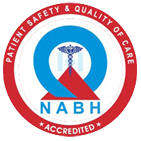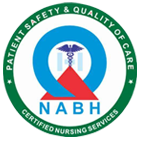FOLLOW THE MISSION HOSPITAL




An antibody is a protein made by white blood cells. Antibodies help defend against invaders (for example, viruses) that cause disease or infection in the body.
An antinuclear antibody (ANA) is an antibody that mistakenly binds to healthy cells normally present in the body. If there are enough ANAs present, this can be a laboratory sign that the immune system is attacking or causing harm to the body. This is known as an autoimmune disorder. Autoimmune disorders can cause inflammation (swelling) and disease, such as arthritis.
ANAs are usually found in people who have autoimmune conditions such as systemic lupus erythematosus. They may also be seen in other autoimmune diseases, such as mixed connective tissue disease, Sjogren’s syndrome, dermatomyositis, polymyositis, scleroderma, Raynaud’s disease, and juvenile idiopathic arthritis.
To perform an ANA test, a blood sample is taken from a vein and sent to a laboratory for testing.
One form of ANA test is called the ELISA. In this test, the person’s blood sample is mixed with antigens (portions of proteins that bind antibodies). If the antibody for that antigen is in the blood, the test can find it.
Laboratories often use ELISA as a first screening, but will follow up with another test (FANA) to confirm the results. The FANA test looks at a sample of plasma (the protein-rich liquid part of blood) that has been mixed with saline (salt water) a certain number of times.
For example, one part of plasma to 32 parts of saline is a 1:32 mixture. This mixture is called a "titer." If an ANA is found at a high titer such as 1:640 (one part of plasma to 640 parts of saline), this means that the blood contains a high level of ANA and the person might have an autoimmune disease.
In addition to looking at the titer, another helpful tool is to view the mixture under a special microscope that shines ultraviolet light.
A positive ANA test may mean that the patient has an autoimmune disease. However, the doctor may order other tests. In addition, the doctor will want to look at the patient’s medical history and do a physical examination before making a diagnosis.
Some researchers believe that the ANA test is overused in children. Instead of using it for all children who have pain in the muscles, joints, or bones, these researchers believe that the test should be used only for children who are likely to have an autoimmune disease and who have definite symptoms (low-grade fever, joint swelling, muscle weakness, and/or unexplained rashes).
The ANA test is limited in how well it can accurately diagnose disease by itself. The ANA test has a high "false positive" rate, meaning that many people who don’t have an autoimmune disease can have elevated ANA levels. For example, many children have a positive ANA test, even though they do not have an autoimmune disease.
It has also been shown that ANAs are present not only in people who have a disease but also in those who have infections (such as viral infections) or cancer (such as acute lymphocytic leukemia). ANAs can also be found in people who are exposed to environmental toxins, and those who are taking certain drugs (such as hydralazine, isoniazid, procainamide, and some anticonvulsants).
About 95% of people who have lupus will have a positive ANA test. If the patient has symptoms of lupus, a positive ANA test can help with the diagnosis.
A negative ANA test, on the other hand, generally means that the person does not have lupus. It is usually not necessary to repeat a negative ANA test. In some instances, performing more specific testing is appropriate if there remains a high index of suspicion for lupus.
In addition to lupus, positive ANA tests results are also seen in other autoimmune diseases such as Sjogren syndrome and scleroderma. Negative test results do not mean that the person does not have one of these diseases, however. Children with juvenile idiopathic arthritis who have a positive ANA are at higher risk of also having inflammatory eye disease (iritis); therefore, they should be evaluated by an ophthalmologist (eye doctor) initially, and then routinely.
Because autoimmune diseases often require a combination of signs before their diagnosis is confirmed, it may take months or even years for a pattern to point to a specific auto immune disease diagnosis.
An ANA test is usually not performed as part of a routine physician visit . Instead, the test is usually ordered only when there is a strong chance that a child’s symptoms are caused by an ANA-positive rheumatic disease, such as lupus or mixed connective tissue disease.
A positive ANA test (especially one with a titer of less than 1:640) by itself can be ignored unless the child has either signs or symptoms of an autoimmune disease and/or other tests which suggest that the patient has lupus or another ANA-positive autoimmune disease.

A Unit Of Durgapur Medical Centre Pvt. Ltd.